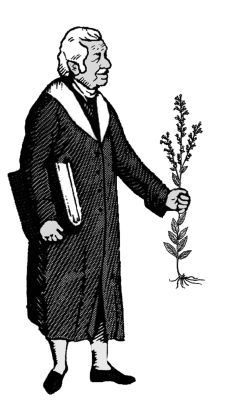Things I Love About Calendula
Published: Wed, 08/18/21


Sponsored by The School of Natural Healing & Christopher Publications
August 18, 2021
Things I Love About Calendula Jo Francks, M.H.

Calendula is a plant that is easy to grow. It is an annual plant but it will come back year after year from seed. Just let a few seeds remain on the plant at the end of the season for another good crop the next year. It flowers mid to late summer and the flowers are what I use for medicine. Just a few plants will produce plenty of flowers for you and your family.
Calendula officinalis is also called pot marigold and sometimes marigold but don’t confuse it with common marigold whose Latin name is Tagetes. Calendula is a very versatile plant and it has many different uses. It is very good at strengthening the immune system. It helps with viruses, infections and fungal infections. It helps clear out the lungs and sinuses. Its demulcent and vulnerary properties make it wonderful for the skin and it is used in many topical creams, salves and ointments. It helps heal wounds, prevent infection, reduce pain, and relieve itching.
When calendula flowers are made into an ointment, the ointment turns out a nice yellow color. We always had yellow ointment around and that became its name. Any time there was a need for a bandage yellow ointment was placed on the bandage first before it was applied to the skin. It always relieved pain or itching and helped wounds heal quickly. We used it for sunburns, insect bites, scrapes, cuts, scratches, hangnails, athlete’s foot, eczema, varicose veins, chapped lips, and all skin problems.
Internally calendula was used as a tea or extract alone or combined with other herbs for colds, flu, sore throats, headaches, fevers, coughs, yeast infections, muscle pain and cramping. The effects were felt almost immediately when drinking a warm cup of calendula tea at the first sign of a cough or sore throat. The flower petals can be added to soup and will give it a nice warm yellow color. They can also be added to salads either fresh or dried.
Calendula also is beneficial in the garden. It helps improve the soil and repel insects. Its bright yellow and orange flowers brighten my day. I would not want to be without calendula because I use it in so many ways.
Jo Francks is a Master Herbalist working at The School of Natural Healing.
Printable Version: http://herballegacy.com
If you missed an article be sure to visit http://www.herballegacy.com and click on Articles. Also, take advantage of David Christopher's Radio Show (see Resource Links below for more information).
A Healthier You Radio show is back!
Listen live every Monday morning at 11:30 Mountain Time.
Click here for the link to listen to our live show

David is on Youtube!
David has a great NEW video about COVID-19. Check it out here!

1 ½ cups dried calendula flowers
Olive oil
Beeswax
Put the calendula flowers into a pint jar and fill the jar with olive oil. Put a tight fitting lid on the jar and set it out in the warm sun for 3 weeks. Strain the oil through a muslin cloth and save the oil. Add an ounce of beeswax to a cup of the infused oil. Put this in a
double boiler and heat it until the wax has melted. Stir well and pour into small ointment jars. Let cool and add the lid and a label.
Recipe from Jo Francks
Printable Version: http://herballegacy.com
Herbal Resource Links
- Herbal Legacy - http://www.herballegacy.com - Our free information website
- The School of Natural Healing - http://www.snh.cc - Quality Education since 1953
- Christopher Publications - http://www.christopherpublications.com - Dr. Christopher's books and more
- A Healthier You Radio Show - http://www.ahealthieryouradio.com - Free weekly radio show
The School of Natural Healing: http://www.snh.cc
Christopher Publications: http://www.christopherpublications.com
NOTICE: All information in this newsletter is given out as information only and is not intended to diagnose or prescribe. For our official Disclaimer, Biological Individuality, Important Notice & Terms of Use please see: http://www.herballegacy.com/Disclaimer.html
This newsletter is sent by permission only - you can unsubscribe quickly and easily by clicking the link below.
.